Malik Tiomoko
GIPSA-Lab, Grenoble-Alps University
Mantis: Lightweight Calibrated Foundation Model for User-Friendly Time Series Classification
Feb 21, 2025Abstract:In recent years, there has been increasing interest in developing foundation models for time series data that can generalize across diverse downstream tasks. While numerous forecasting-oriented foundation models have been introduced, there is a notable scarcity of models tailored for time series classification. To address this gap, we present Mantis, a new open-source foundation model for time series classification based on the Vision Transformer (ViT) architecture that has been pre-trained using a contrastive learning approach. Our experimental results show that Mantis outperforms existing foundation models both when the backbone is frozen and when fine-tuned, while achieving the lowest calibration error. In addition, we propose several adapters to handle the multivariate setting, reducing memory requirements and modeling channel interdependence.
Analysing Multi-Task Regression via Random Matrix Theory with Application to Time Series Forecasting
Jun 14, 2024Abstract:In this paper, we introduce a novel theoretical framework for multi-task regression, applying random matrix theory to provide precise performance estimations, under high-dimensional, non-Gaussian data distributions. We formulate a multi-task optimization problem as a regularization technique to enable single-task models to leverage multi-task learning information. We derive a closed-form solution for multi-task optimization in the context of linear models. Our analysis provides valuable insights by linking the multi-task learning performance to various model statistics such as raw data covariances, signal-generating hyperplanes, noise levels, as well as the size and number of datasets. We finally propose a consistent estimation of training and testing errors, thereby offering a robust foundation for hyperparameter optimization in multi-task regression scenarios. Experimental validations on both synthetic and real-world datasets in regression and multivariate time series forecasting demonstrate improvements on univariate models, incorporating our method into the training loss and thus leveraging multivariate information.
Random matrix theory improved Fréchet mean of symmetric positive definite matrices
May 10, 2024


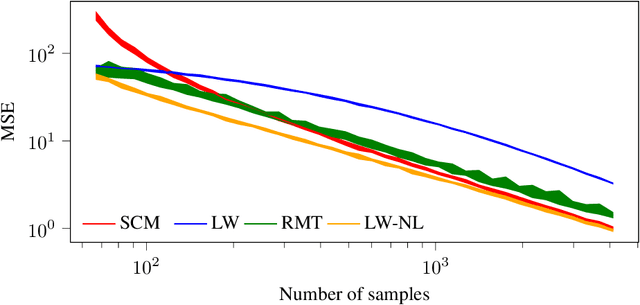
Abstract:In this study, we consider the realm of covariance matrices in machine learning, particularly focusing on computing Fr\'echet means on the manifold of symmetric positive definite matrices, commonly referred to as Karcher or geometric means. Such means are leveraged in numerous machine-learning tasks. Relying on advanced statistical tools, we introduce a random matrix theory-based method that estimates Fr\'echet means, which is particularly beneficial when dealing with low sample support and a high number of matrices to average. Our experimental evaluation, involving both synthetic and real-world EEG and hyperspectral datasets, shows that we largely outperform state-of-the-art methods.
Random Matrix Analysis to Balance between Supervised and Unsupervised Learning under the Low Density Separation Assumption
Oct 20, 2023



Abstract:We propose a theoretical framework to analyze semi-supervised classification under the low density separation assumption in a high-dimensional regime. In particular, we introduce QLDS, a linear classification model, where the low density separation assumption is implemented via quadratic margin maximization. The algorithm has an explicit solution with rich theoretical properties, and we show that particular cases of our algorithm are the least-square support vector machine in the supervised case, the spectral clustering in the fully unsupervised regime, and a class of semi-supervised graph-based approaches. As such, QLDS establishes a smooth bridge between these supervised and unsupervised learning methods. Using recent advances in the random matrix theory, we formally derive a theoretical evaluation of the classification error in the asymptotic regime. As an application, we derive a hyperparameter selection policy that finds the best balance between the supervised and the unsupervised terms of our learning criterion. Finally, we provide extensive illustrations of our framework, as well as an experimental study on several benchmarks to demonstrate that QLDS, while being computationally more efficient, improves over cross-validation for hyperparameter selection, indicating a high promise of the usage of random matrix theory for semi-supervised model selection.
PCA-based Multi Task Learning: a Random Matrix Approach
Nov 01, 2021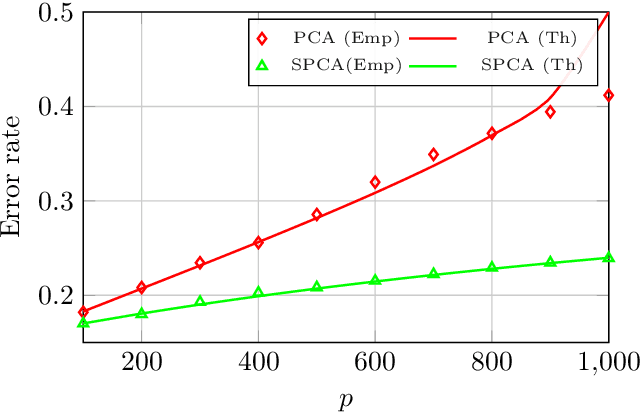

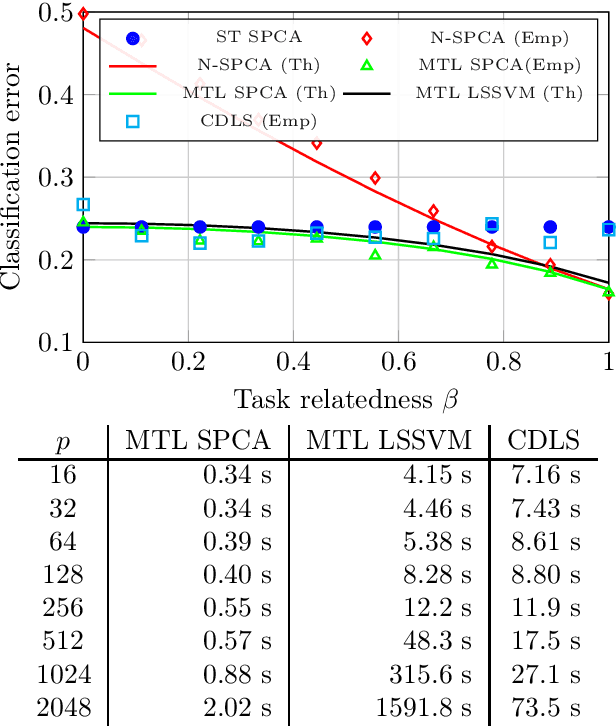
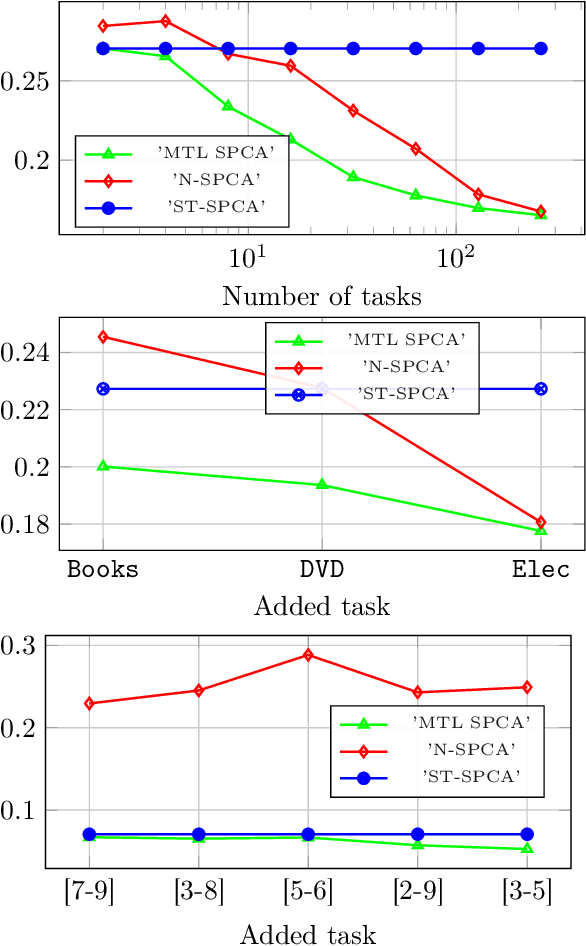
Abstract:The article proposes and theoretically analyses a \emph{computationally efficient} multi-task learning (MTL) extension of popular principal component analysis (PCA)-based supervised learning schemes \cite{barshan2011supervised,bair2006prediction}. The analysis reveals that (i) by default learning may dramatically fail by suffering from \emph{negative transfer}, but that (ii) simple counter-measures on data labels avert negative transfer and necessarily result in improved performances. Supporting experiments on synthetic and real data benchmarks show that the proposed method achieves comparable performance with state-of-the-art MTL methods but at a \emph{significantly reduced computational cost}.
Multi-task learning on the edge: cost-efficiency and theoretical optimality
Oct 09, 2021



Abstract:This article proposes a distributed multi-task learning (MTL) algorithm based on supervised principal component analysis (SPCA) which is: (i) theoretically optimal for Gaussian mixtures, (ii) computationally cheap and scalable. Supporting experiments on synthetic and real benchmark data demonstrate that significant energy gains can be obtained with no performance loss.
Large Dimensional Analysis and Improvement of Multi Task Learning
Sep 03, 2020



Abstract:Multi Task Learning (MTL) efficiently leverages useful information contained in multiple related tasks to help improve the generalization performance of all tasks. This article conducts a large dimensional analysis of a simple but, as we shall see, extremely powerful when carefully tuned, Least Square Support Vector Machine (LSSVM) version of MTL, in the regime where the dimension $p$ of the data and their number $n$ grow large at the same rate. Under mild assumptions on the input data, the theoretical analysis of the MTL-LSSVM algorithm first reveals the "sufficient statistics" exploited by the algorithm and their interaction at work. These results demonstrate, as a striking consequence, that the standard approach to MTL-LSSVM is largely suboptimal, can lead to severe effects of negative transfer but that these impairments are easily corrected. These corrections are turned into an improved MTL-LSSVM algorithm which can only benefit from additional data, and the theoretical performance of which is also analyzed. As evidenced and theoretically sustained in numerous recent works, these large dimensional results are robust to broad ranges of data distributions, which our present experiments corroborate. Specifically, the article reports a systematically close behavior between theoretical and empirical performances on popular datasets, which is strongly suggestive of the applicability of the proposed carefully tuned MTL-LSSVM method to real data. This fine-tuning is fully based on the theoretical analysis and does not in particular require any cross validation procedure. Besides, the reported performances on real datasets almost systematically outperform much more elaborate and less intuitive state-of-the-art multi-task and transfer learning methods.
Random Matrix-Improved Estimation of the Wasserstein Distance between two Centered Gaussian Distributions
Mar 08, 2019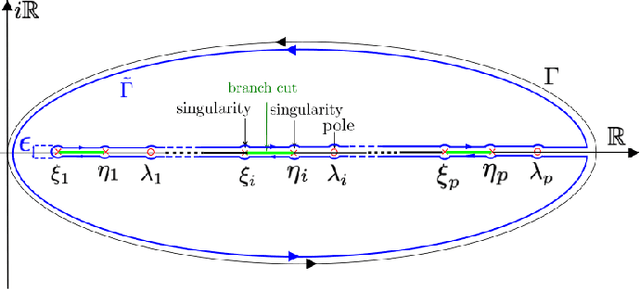
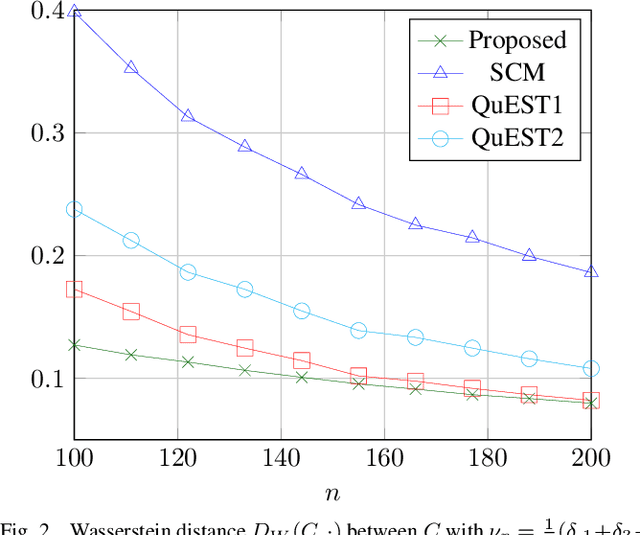
Abstract:This article proposes a method to consistently estimate functionals $\frac1p\sum_{i=1}^pf(\lambda_i(C_1C_2))$ of the eigenvalues of the product of two covariance matrices $C_1,C_2\in\mathbb{R}^{p\times p}$ based on the empirical estimates $\lambda_i(\hat C_1\hat C_2)$ ($\hat C_a=\frac1{n_a}\sum_{i=1}^{n_a} x_i^{(a)}x_i^{(a){{\sf T}}}$), when the size $p$ and number $n_a$ of the (zero mean) samples $x_i^{(a)}$ are similar. As a corollary, a consistent estimate of the Wasserstein distance (related to the case $f(t)=\sqrt{t}$) between centered Gaussian distributions is derived. The new estimate is shown to largely outperform the classical sample covariance-based `plug-in' estimator. Based on this finding, a practical application to covariance estimation is then devised which demonstrates potentially significant performance gains with respect to state-of-the-art alternatives.
Random Matrix Improved Covariance Estimation for a Large Class of Metrics
Feb 07, 2019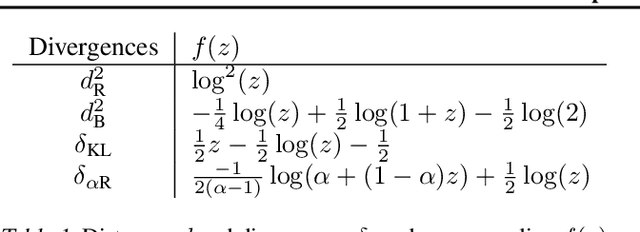
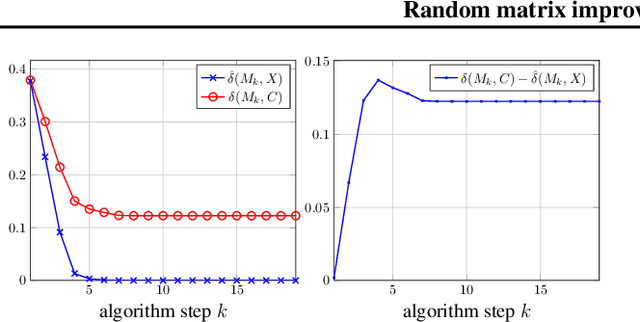
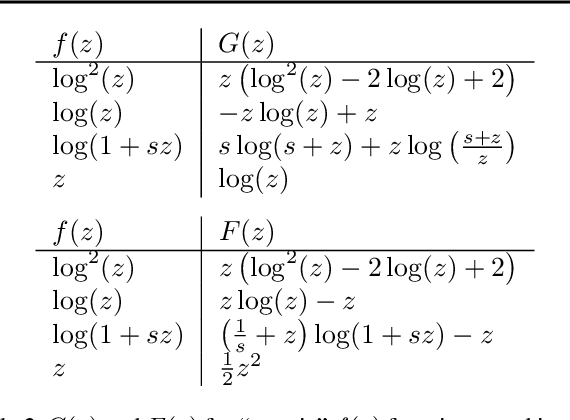
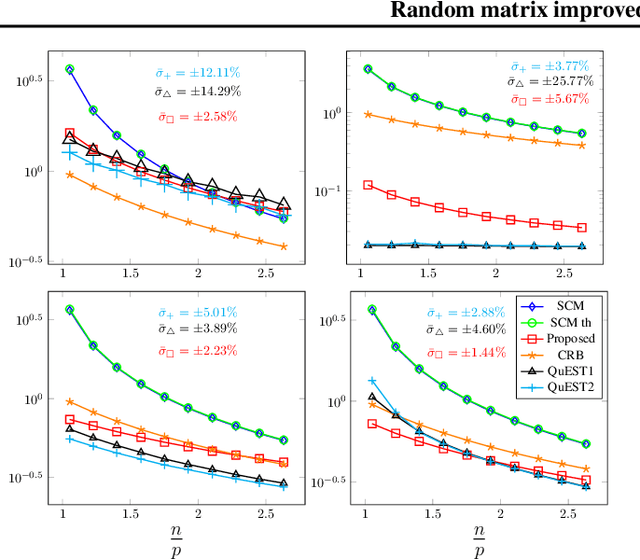
Abstract:Relying on recent advances in statistical estimation of covariance distances based on random matrix theory, this article proposes an improved covariance and precision matrix estimation for a wide family of metrics. The method is shown to largely outperform the sample covariance matrix estimate and to compete with state-of-the-art methods, while at the same time being computationally simpler. Applications to linear and quadratic discriminant analyses also demonstrate significant gains, therefore suggesting practical interest to statistical machine learning.
Random matrix-improved estimation of covariance matrix distances
Oct 10, 2018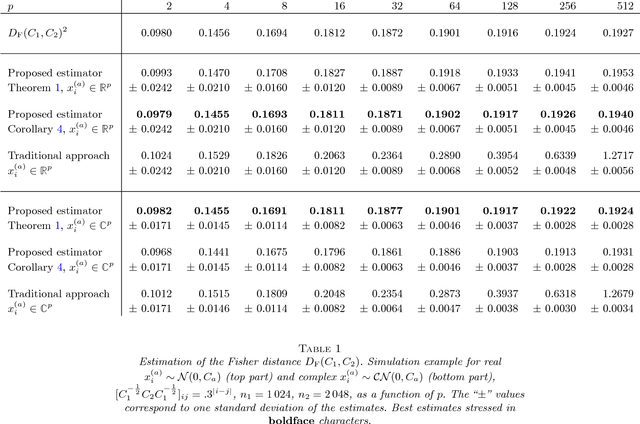
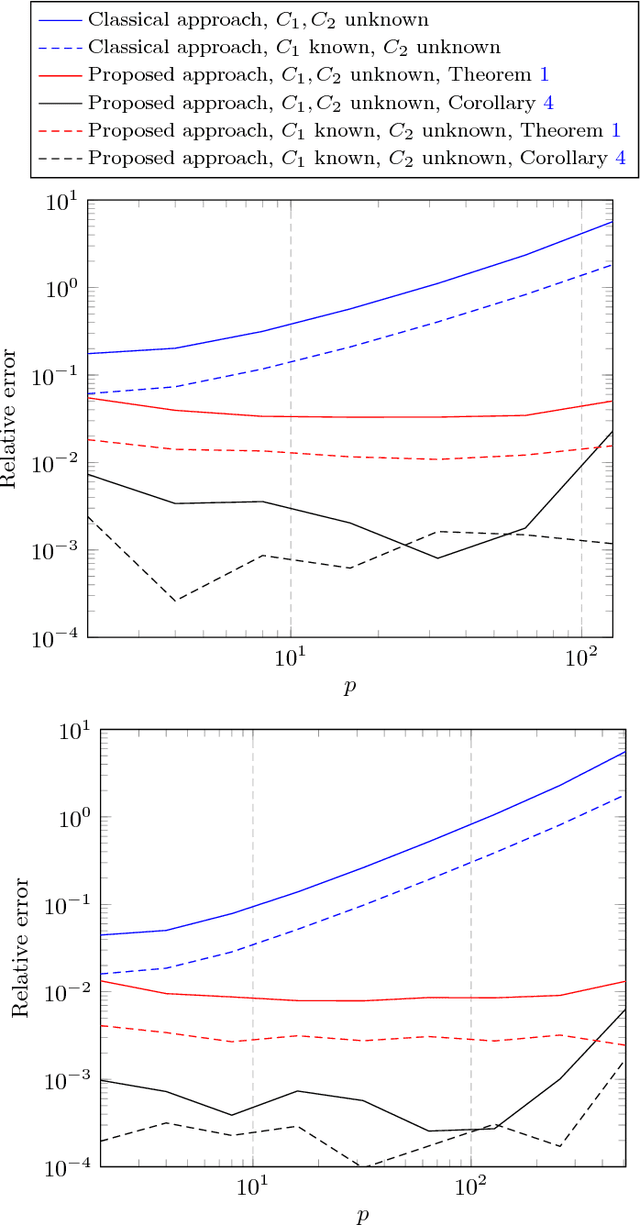
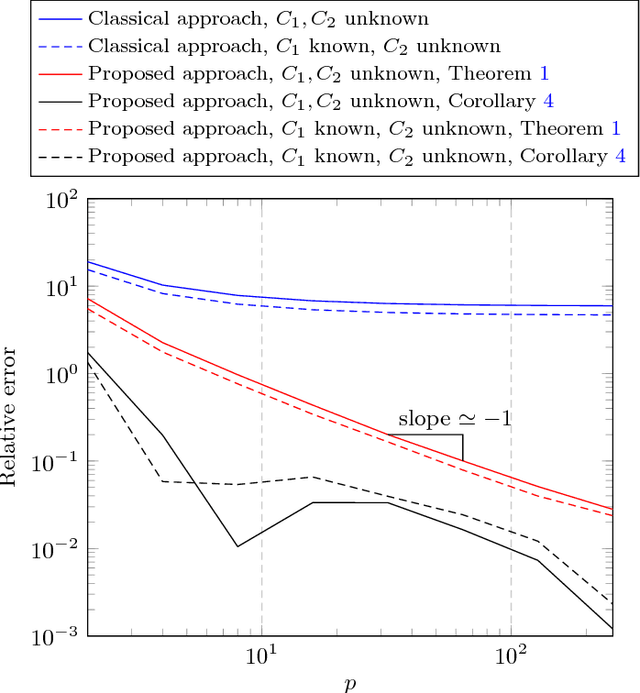
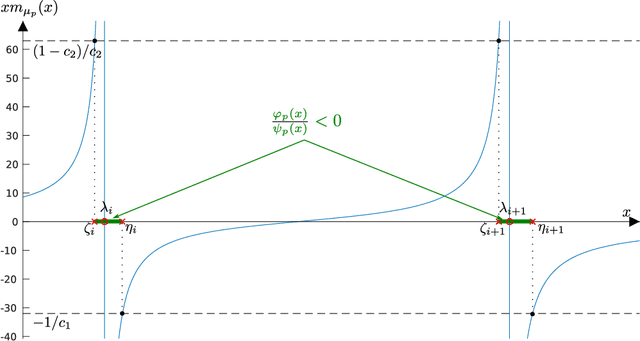
Abstract:Given two sets $x_1^{(1)},\ldots,x_{n_1}^{(1)}$ and $x_1^{(2)},\ldots,x_{n_2}^{(2)}\in\mathbb{R}^p$ (or $\mathbb{C}^p$) of random vectors with zero mean and positive definite covariance matrices $C_1$ and $C_2\in\mathbb{R}^{p\times p}$ (or $\mathbb{C}^{p\times p}$), respectively, this article provides novel estimators for a wide range of distances between $C_1$ and $C_2$ (along with divergences between some zero mean and covariance $C_1$ or $C_2$ probability measures) of the form $\frac1p\sum_{i=1}^n f(\lambda_i(C_1^{-1}C_2))$ (with $\lambda_i(X)$ the eigenvalues of matrix $X$). These estimators are derived using recent advances in the field of random matrix theory and are asymptotically consistent as $n_1,n_2,p\to\infty$ with non trivial ratios $p/n_1<1$ and $p/n_2<1$ (the case $p/n_2>1$ is also discussed). A first "generic" estimator, valid for a large set of $f$ functions, is provided under the form of a complex integral. Then, for a selected set of $f$'s of practical interest (namely, $f(t)=t$, $f(t)=\log(t)$, $f(t)=\log(1+st)$ and $f(t)=\log^2(t)$), a closed-form expression is provided. Beside theoretical findings, simulation results suggest an outstanding performance advantage for the proposed estimators when compared to the classical "plug-in" estimator $\frac1p\sum_{i=1}^n f(\lambda_i(\hat C_1^{-1}\hat C_2))$ (with $\hat C_a=\frac1{n_a}\sum_{i=1}^{n_a}x_i^{(a)}x_i^{(a){\sf T}}$), and this even for very small values of $n_1,n_2,p$.
 Add to Chrome
Add to Chrome Add to Firefox
Add to Firefox Add to Edge
Add to Edge